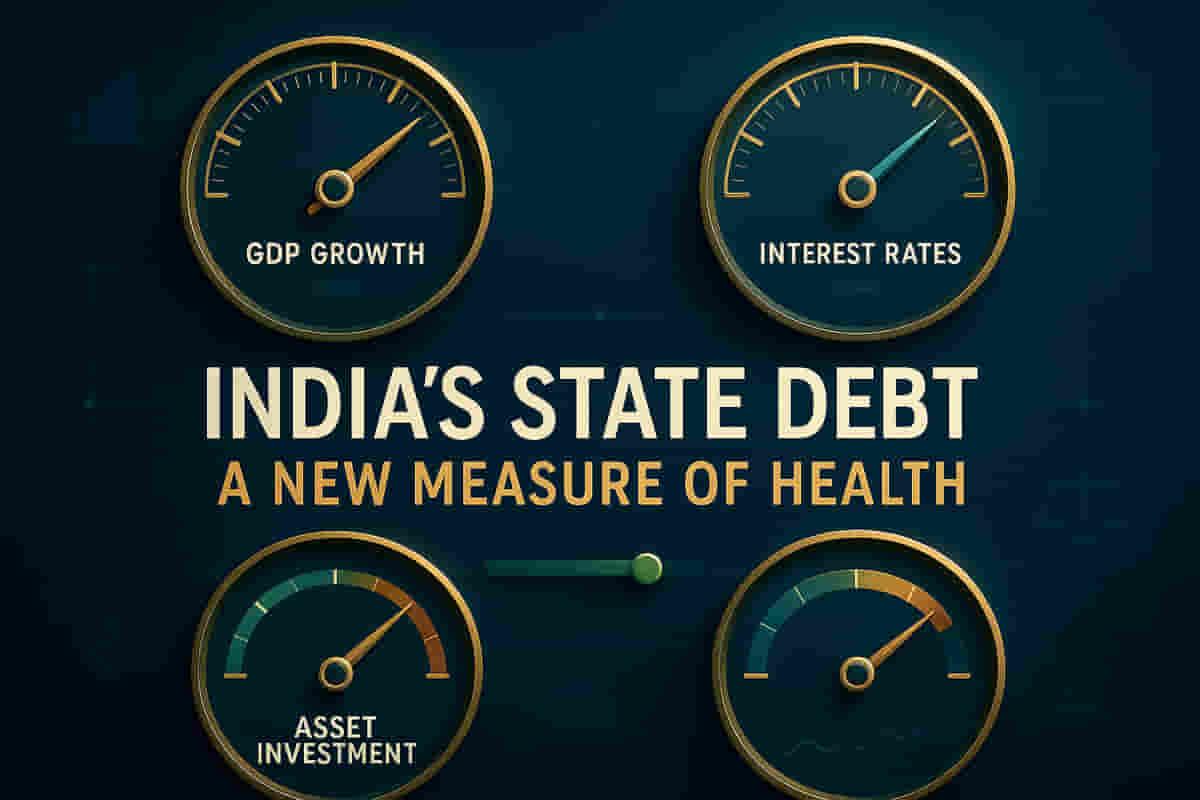Indian States' Debt Sustainability Needs Multi-Factor Index, Not Just Debt-to-GDP Ratio, Study Says
Economy
|
30th October 2025, 12:51 AM

▶
Short Description :
Detailed Coverage :
The FRBM Review Committee in 2017 and the 15th Finance Commission have proposed rule-based fiscal policies and consolidation targets for Indian states. While the impact of public debt on economic growth is debated, excessive debt can create uncertainty, whereas strategic borrowing for infrastructure can stimulate growth. The article notes that despite overall projected moderation in states' public debt-to-GSDP ratio, significant variations exist, with states like Odisha having low ratios and others like Arunachal Pradesh having high ones. This indicates that a 'one-size-fits-all' approach to debt sustainability is inadequate.
A new debt sustainability index is proposed, incorporating five criteria: the difference between GSDP growth and interest rate (Domar gap), debt buoyancy (debt growth vs. GSDP growth), debt-to-GSDP ratio, debt-to-revenue receipt ratio (repayment capacity), and the ratio of cumulative capital expenditure to debt (asset quality). The index gives significant weight to assets created through debt.
Findings reveal a limited correlation between the traditional Debt-to-GDP ratio and this new index. Punjab and West Bengal show concerningly low index values, while states with an index above 0.6 are deemed fiscally prudent. The authors recommend that the Finance Commission adopt a flexible approach, allocating funds based on Key Performance Indicators (KPIs) that assess solvency, repayment capacity, and resource utilization quality, rather than solely focusing on debt stock.
Impact: This analysis is crucial for Indian investors and policymakers. It suggests that a more sophisticated approach to assessing state debt sustainability is needed, moving beyond simple Debt-to-GDP ratios. This can lead to better fiscal discipline, potentially reducing risks associated with heavily indebted states and improving overall economic stability. For investors, it offers a deeper insight into the financial health of states, aiding investment decisions. The framework could also guide the Finance Commission in resource allocation. Rating: 7/10
Difficult Terms: * FRBM: Fiscal Responsibility and Budget Management Act, aiming for fiscal transparency and deficit reduction. * Fiscal Policy: Government actions on taxation and spending to influence the economy. * Fiscal Deficit: Government expenditure exceeding its revenue, excluding borrowings. * Revenue Deficit: Government revenue expenditure exceeding its revenue receipts. * GSDP (Gross State Domestic Product): The total market value of all final goods and services produced within a state in a given period. * Domar Gap: A measure of debt sustainability comparing economic growth rate to the interest rate on debt. A positive gap (growth > interest) suggests sustainability. * Debt Buoyancy: The ratio of the change in debt to the change in GDP, showing how debt grows relative to the economy. * Debt Sustainability Index: A composite score evaluating a state's long-term debt management capability using various financial metrics.